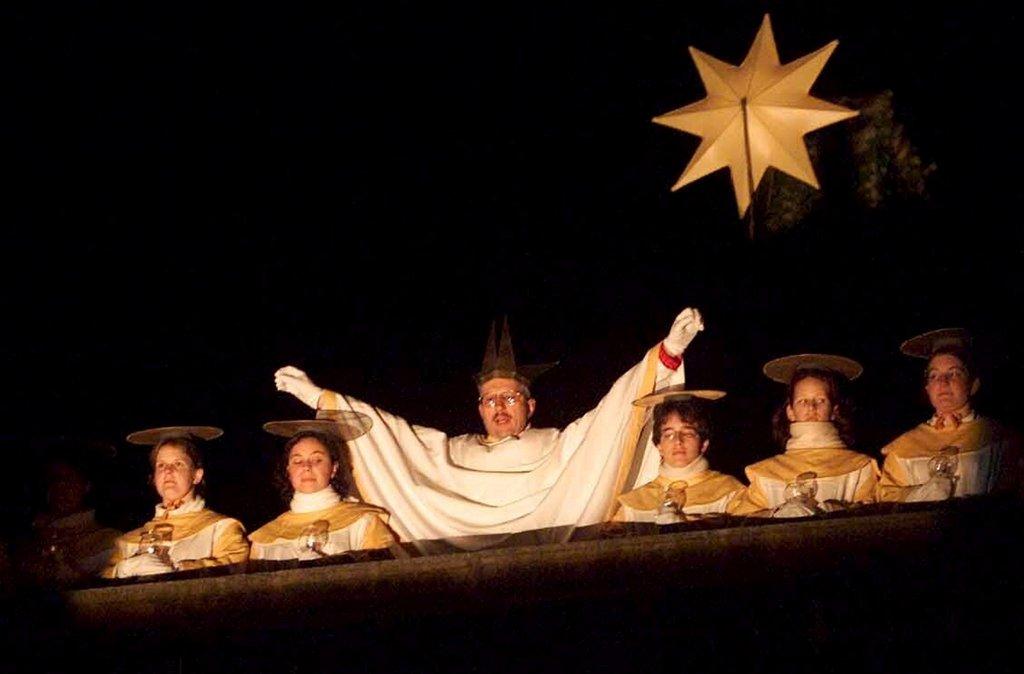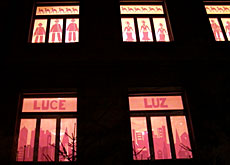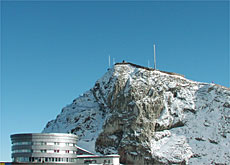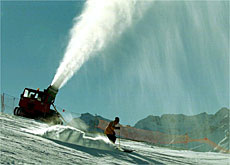Swiss keep in tune at Christmas

Switzerland has a rich and diverse tradition of carol singing at Christmas due to its position at the heart of Europe and its multilingual status.
Carols are also sung at New Year and Epiphany (January 6), with a highlight being Sternsingen – singing for the Three Kings – which dates from the Middle Ages.
“There is a tradition of singing Christmas carols in Switzerland,” said Fritz Näf, conductor of the Basler Madrigalisten singers, who have produced an album of Christmas carols.
“But the repertoire is quite clearly international and highly influenced by our neighbouring countries like Germany, Italy and also France,” he told swissinfo.
German carols are particularly popular, with favourites including Silent Night and Es ist ein Ros’ entsprungen (Of Jesse’s line descended).
Switzerland has also produced a few homegrown songs of its own. Among these is Noi siamo i tre re (We are the Three Kings) from Italian-speaking Ticino.
“This is a very popular Christmas carol. It’s a song with only male voices and has a wonderfully catchy melody,” said Näf.
Although there are some carols in French, Näf says there are not really any old songs in Swiss German, the dialect spoken by around two thirds of the population in Switzerland.
Romansh
But there are several tunes in Romansh, the country’s fourth national language – after German, French and Italian.
As it is only spoken by a minority – 0.5 per cent of the population – and is limited to the mountainous eastern canton of Graubünden, it has developed its own tradition.
One of the better-known carols is Maranata (cloms d’Advent), composed by Gion Giusep Derungs.
Näf says Romansh carols reflect the lively tradition of folk singing in Swiss alpine regions.
Carols are usually sung within the family or at church, says Näf, and choirs often give concerts or sing for charity during the period leading up to Christmas.
But Switzerland has some special carol traditions as well. “The tradition of singing songs at the turn the year, the so called “Sternsingen” (star-singing), is very popular and widespread too, mostly in the Catholic parts of the country,” the choir director told swissinfo.
Three Kings
In 1164 the relics of the Three Kings were transferred from Milan to Cologne and this left an impression on Switzerland with an enduring emphasis on the worship of the three wise men.
Carollers, often children dressed as the kings or a choir carrying a star, sing on town squares or go from house to house. This is supposed to symbolise the common bond between community members.
The custom takes place in Lucerne and Wettingen in canton Aargau. In canton Obwalden, in central Switzerland, there is a Three Kings Chorale, which dates back to the 16th century.
Graubünden has around 65 Kings Chorale groups. Originally this custom was organised by the young men, while the unmarried women prepared the costumes.
Chinigrossli
In Lötschental, canton Valais, people hold the Chinigrossli where three elaborately dressed kings, accompanied by jesters, process around the town on hobbyhorses. This takes place on the eve of Epiphany.
Some star-singing traditions, such as in Lucerne, were lost over the years or, as in the case of Obwalden, banned in the 19th century. They were revived in the 1930s and 1940s with the renewed interest in folk culture.
Näf says the Swiss yuletide musical tradition is quite wide-ranging.
“There is also a tradition of sacred plays at Christmas which is also extends into the 20th century, such as the very popular D’Zäller Wiehnacht (Christmas at Zell) by Paul Burkhard,” said Näf.
“Recently quite a lot of popular carols have been adapted to suit the taste of young people,” he added.
This of course includes the ever-popular Christmas songs. Swiss pop stars are not adverse to releasing holiday tunes – original melodies, in the Anglo-Saxon style or jazzed up versions of carols – in the national languages – and even in English.
swissinfo, Isobel Leybold-Johnson
A carol typically alternates verses with a repeated refrain or chorus.
It originated in medieval England where it was a joyful hymn sung at the Nativity or at another festival such as Easter. It was only later that they began to be sung in churches and be more associated with Christmas.
Carols declined in popularity after the Reformation but underwent a revival in the 19th century.

In compliance with the JTI standards
More: SWI swissinfo.ch certified by the Journalism Trust Initiative




You can find an overview of ongoing debates with our journalists here. Please join us!
If you want to start a conversation about a topic raised in this article or want to report factual errors, email us at english@swissinfo.ch.